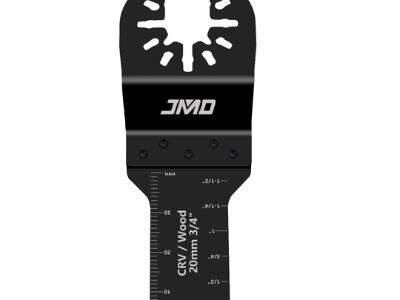When it comes to cutting things for your DIY projects, one of the most important things you can do is to select the right blade for your oscillating saw. The blade is obviously an important component of the saw, and also having the correct one means your cuts are clean and neat, so you’ll have a great looking final product. But with such a vast array out there, how do you ensure which blade is the best for your project? To assist you in finding the most suitable oscillating saw blade for your requirements, here are some helpful tips.
How significant Are the Teeth of the Blade for Oscillating Saws
Let's discuss what makes the teeth on the blade so significant before we go into how to choose a blade. It’s actually the teeth on the blade that do the cutting, and the number and type of these teeth can make a significant difference in the blade’s performance. There are different types of blades with their own tooth counts, with different types of teeth depending on the materials they will be cutting. A blade with fewer teeth, for example, will cut the wood rapidly but won't typically leave a clean finsh, making it appropriate for coarse cuts. In contrast, blades with more teeth are more suited to producing smooth, accurate cuts, the sort you'll require when you're looking for a clean edge.
How to Choose the Best Saw Blade for Power Tubing?
Now that you know the importance of blade teeth, here are some helpful tips to consider when choosing the right blade for your DIY projects:
Consider first what is to be cut. Some blades are designed for specific materials, so you should acquire one designed for the material you will be cutting. For instance, you would require a different blade if you intend to be cutting wood rather than metal or plastic. Every material has its own cutting demands for efficient cutting.
Next, decide what kind of cut you wish to make. Is it a first pass, or are you going for a finished cut? If you intend to rough cut, possibly go with a blade with fewer teeth to make quicker cuts. That said, if you need a clean cut, you are going to want to use a blade with more teeth for that, it will give you a smoother, cleaner cut.
Follow the manufacturer's specifications in the blade’s instructions. Most manufacturers will have recommendations on what the blade is designed for, so do check this information before making your selection. This information may assist you in understanding how the blade should be used and what materials it works best with.
Observe the size and shape of the blade. The dimensions will impact the depth and shape of your cuts. A longer blade is required only if you have to make a deeper cut. If you are looking for a curved cut, then a blade that is curved in shape will suit best. Your choice of the right size and shape will determine your cuts to get for your project.
Avoid being cheap when it comes to blades. Less expensive blades may seem like a bargain, but they often won’t hold up for very long and can produce low-quality cuts. You may find that, even if there is a palatable-level priced product, investing a bit more in a reputable blade designed for your needs will serve you better over time, performing better and lasting you much longer.
Selecting the Best Oscillating Saw Blade for Your Home Improvement Project
Now that you understand what to look for in an oscillating saw blade, let’s recap some tips and tricks that can help you get the right one for your DIY project:
Material: What are you cutting? Just make sure to select a blade suited for that type of material. That will guarantee you the most effective out of it.
Tooth Count: Are you going to do rough cuts or want accurate cuts? Pick a blade according to the required numbers of teeth. More teeth for fine precision, fewer teeth for a rough cut.
Shape: What shape will the cut be? Choose a properly shaped blade to match the type of cuts you plan to make. This is especially true for curved cuts.
Manufacturer Specifications: Be sure to read the manufacturer’s specifications to make certain that the blade you select is suited for your particular project. This knowledge can inform your estimation and help you avoid errors.
Quality: Don't sacrifice quality. You should be investing in a good blade that won’t wear out on you quickly and will give you better cut. Having good tools to work with makes a world of difference.
Sure you can use these tips to choose the right oscillating saw blade for any DIY project, whether you are cutting wood, metals, hard materials, or need a particular type of cut.
No matter the size of your project, blade jig saw having the right tools is essential. That is why we have a wide range of high- quality oscillating saw blades that suit various materials and applications. Whatever you are slicing through, be it flooring, drywall, or plumbing, our blades are designed to deliver a smooth and precise cut every time. Check out our selection today to find the correct blade for your next project and get your DIY task done!

 EN
EN
 AR
AR
 BG
BG
 HR
HR
 CS
CS
 DA
DA
 NL
NL
 FI
FI
 FR
FR
 DE
DE
 EL
EL
 IT
IT
 JA
JA
 NO
NO
 PL
PL
 PT
PT
 RO
RO
 RU
RU
 ES
ES
 SV
SV
 LV
LV
 LT
LT
 SR
SR
 SK
SK
 SL
SL
 UK
UK
 ET
ET
 HU
HU
 TR
TR
 FA
FA
 GA
GA
 CY
CY
 BE
BE
 IS
IS
 HY
HY
 AZ
AZ
 KA
KA
 LA
LA
 MY
MY
 XH
XH

